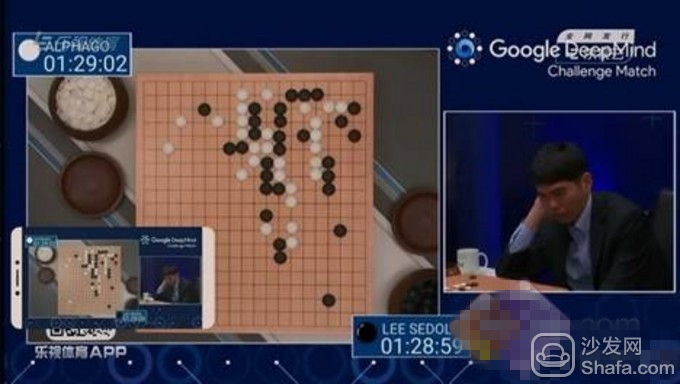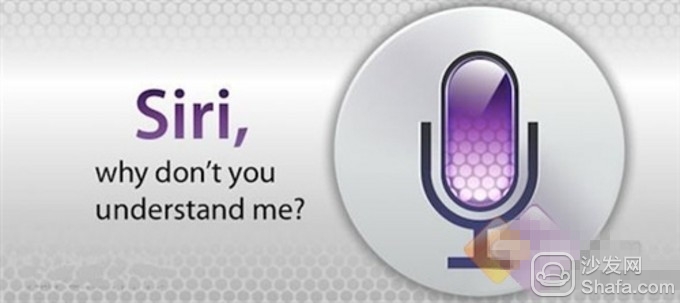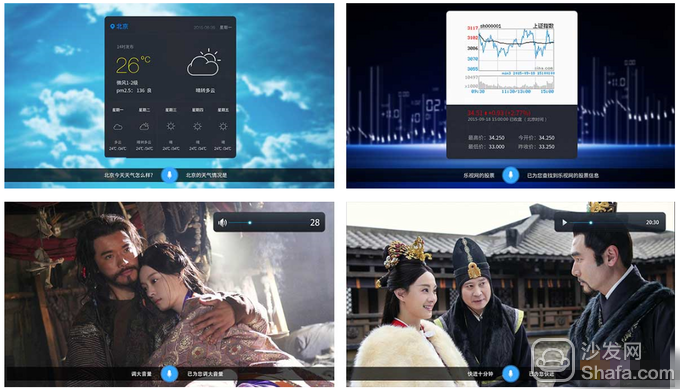Technology changes lives, but how can technology change your life? Today, the most popular artificial intelligence is no longer a myth. It is no longer a phantom that can only be seen in movies. Artificial intelligence can be concrete and tangible. It's just around you and me. It can make your life easier and easier. The voice control applications on smart phones and smart TVs that we come into contact with every day are actually artificial intelligence applications. However, when products from the United States are still a headache for the localization of Chinese products, China's Lele Voice has begun to challenge Siri, Google Now and other products. Artificial intelligence will be the next outlet Although hot money is now flowing into VR virtual reality products and unmanned aerial vehicle (UAV) products, VR and UAVs can only be considered a localized innovation application. Actually, they are not artificial intelligence products. So what is artificial intelligence? I think that artificial intelligence should be able to do something for the user in advance, and help the user area to predict or solve some problems in advance. And artificial intelligence will be the next big thing in the field of technology. The artificial intelligence Artificial Intelligence (AI) is well-known, probably originated from the "Artificial Intelligence" movie in 2001, in which Dr David Hobby, a robot with emotion program, was created. David will have a human-like way of thinking. He will communicate with people, have emotions, be dependent on human partners, and even have fear. David described in the "artificial intelligence" movie can be said to be an ultimate state of artificial intelligence robots, and artificial intelligence can actually be used in many scenes and in various fields. A few days ago, when the man-machine go-between fights, we saw the highly intelligent artificial intelligence computer AlphaGo built by Google's DeepMaind team and won the Korea Go world champion Li Shishi with a 4:1 score. AlphaGo is actually a Go computer that can learn, judge, and calculate in real time. Similar artificial intelligence applications also existed on May 11, 1997, against Deep Blue, the IBM chess computer of Kasparov, the world champion of chess. However, the ultimate goal of the development of artificial intelligence is to penetrate into all aspects of people's lives and to truly help people change their life experience. So what we really need is a robot or computer (computer program) that can really help people to do something in an application scenario. These artificial intelligence technologies have actually begun to infiltrate into our lives, such as smart voice assistants and voice control applications. The research on voice control technology started as early as the 20th century, and it has only been commercialized in recent years, and it has begun to be widely used on smart phones used by everyone. For example, we know Siri on the iPhone, but it is not perfect in practical applications. In the United States, it is often criticized by the public for not being able to correctly identify user intent. At the same time, voice assistant applications such as Siri have a long way to go, such as regionalization, dialects, and user habits. Put AI into reality Before we understand artificial intelligence, we may also want to understand the natural interaction. After all, artificial intelligence is a machine. Therefore, before an artificial intelligence device can completely calculate and execute a task, it requires the user to give instructions to the device. This is the early stage of human-computer interaction, or artificial intelligence. The study of human-computer interaction began in the early 20th century. Until the 1970s, Xerox introduced the first Palo Alto Research Center graphical user interface, and nowadays it has natural interactions such as voice interaction, somatosensory interaction, and other branches. The human-computer interaction that we see in sci-fi movies using holographic projection technology is rare. Although this kind of human-computer interaction using holographic projection technology only looks cool, the nature of the study is actually a graphical interface. Interactions are not innovative in the face of natural interactions. Natural interaction is an abbreviation of Natural User Interface (NUI), and is a more advanced human-computer interaction mode following the command line interface CLI and GUI. Natural interactions operate computers or computing devices in a more natural and direct way. More intuitively, the computer using the NUI no longer needs to use a traditional keyboard or mouse, and can use a person's body, gestures, voice, etc. to achieve a dialogue with the computer device. To put it simply, use natural means to let the computing device know what you are doing. Natural interaction is reflected on Super TV In the third generation of LeTV as announced in 2015, LeTV once again upgraded its voice interaction technology. Supertalk Super Voice 2.0 technology integrated on Super TV is the world’s first far-sighted scenario intelligent voice system, which can completely liberate both hands. Interaction: It is very convenient to use voice to complete almost all operations such as booting, changing channels, searching programs, adjusting the volume, checking the weather, checking ticket and ticket, etc. in a long-distance scene, subverting the traditional way of controlling television. It is reported that Levision Super TV with a sustainable iterative EUI operating system has a LeTV cloud computing and big data analysis platform behind it that can learn and analyze user habits and implement voice and gesture control functions. Maybe you don't have a super TV, maybe you have a super TV but you don't understand the mystery of the EUI operating system. In fact, it is a true manifestation of artificial intelligence. Behind the EUI operating system built into LeTV is actually a very complex operating system that can span smart TVs, smart phones, and smart cars. LeTV's implementation of voice assistant and voice control functions is achieved through the integration of Lele voice in the EUI operating system. Lele Voice is based on an artificial intelligence system based on Internet technology LeTV cloud computing and big data technology. You can use voice to achieve long-distance scene on the TV boot, change Taiwan, search programs, adjust the volume, check the weather, check tickets, train tickets and other intelligent control, become the user's voice assistant. Lele audio to achieve artificial intelligence in advance layout On the road to artificial intelligence, voice interaction in the category of natural interaction is the only way to go, and LeTV has already begun early deployment of voice control and voice assistance. As early as 2013, LeTV has already implemented functions such as voice search and voice control on the first generation of LeTV. However, LeTV was not satisfied with this and established Lele Innovation Intelligence (Beijing) Co., Ltd. This is also the consistent style of self-built ecology advocated by LeTV Jia Yueting. Lele Innovation is the first voice interactive technology solution provider in China that makes full use of internet thinking, directly faces users, grasps user needs, conducts product excavation and expansion, and can integrate deep user operations and comprehensive data. The innovative Internet technology research and development focusing on intelligent voice and language technologies and human-machine intelligent interactions can provide an open SDK cloud platform and intelligent hardware for adapting terminal scenarios to the Internet platform and smart hardware developers. Voice interactive products can cover TV, car, GM and toy product lines, and support LeTV has super TV, super mobile phones, super cars, other intelligent hardware products, and can be open to non-music products. Lele Audio is Lele's innovative voice interactive product. It first landed LeTV's earliest business line Super TV. LeTV provides supersonic voice and far-speech super speech 2.0 and other speech recognition technologies. Each speech operation must be initiated by the user's voice. After noise reduction, speech recognition, semantic analysis, and instructions, multiple links to the cloud computing platform And big data and operations are all tests. At present, Le Le Lele audio is being subtly integrated into the EUI operating system. Voice input, voice search, and voice assistant have been implemented. Voice voice recognition, voice input, and other functions are being developed. The ultimate vision of Lele voice is just like the previous author. Active intelligence described. Active intelligence is the best performance of artificial intelligence. In the end, it is better for you to postpone with the idea of ​​Xiao Bian. What is the future of artificial intelligence? I want to realize the intelligent robot with emotion in "Artificial Intelligence" and may not see it in my lifetime. In recent years, the direction of artificial intelligence, which can be better developed is voice interaction technology. Voice interaction can be better applied, and it should be applied in personal applications such as smart home and car networking. Taking the “Smart Homeâ€, which we have been hot in recent years, as an example, LeTV can use Super TV as a “smart home center†to control the smart devices such as TVs, air conditioners, doors and windows with far-speaking voice. The use of far-speaking voice technology allows users to “keep their hands on their hands†and achieve intelligent control of home products in the home. From this perspective, China's Lele Voice has begun to challenge Siri from the United States, at least in the Chinese region has a very large local advantage. In the future, will Lele Voice be able to achieve the subversion of LeTV in the traditional TV industry? I think this is not an impossible thing.
Drivers with dimming capability can dim the LED light output over the full range from 100% to 0%. Dimming drivers can dim LEDs by reduction in the forward current, pulse width modulation (PWM) via digital control, or more sophisticated methods. Most dimming drivers operate using the PWM method. With this method, the frequency could range from a hundred modulations per second to as high as hundreds of thousands of modulations per second, so that the LED appears to be continuously lighted without flicker.
At present, the most commonly used LED dimming power: LED thyristor dimming power, LED 0 / 1-10V dimming power, PWM dimming power supply. Other dimming works by controlling the current and voltage, the frequency of the output to achieve the LED dimming function.
0-10V/PWM/RX Dimming Driver 10V Dimmable Led Driver,Led Pwm Driver,Constant Current Driver Dimmable ShenZhen Fahold Electronic Limited , https://www.fahold.com









March 25, 2021